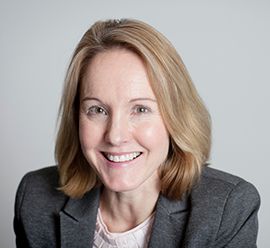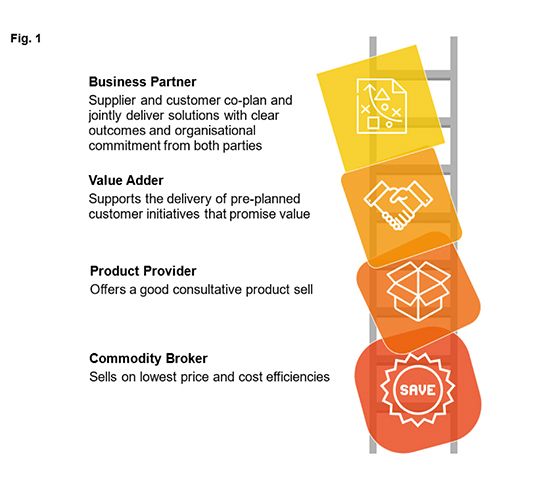Building a Key Account Organization: 5 Power Questions
If companies are serious about building a sustainable organization for their employees and becoming a partner to key accounts, they need to be prepared to remodel their whole business around it, writes Miranda Wheatley Price.
Miranda Wheatley Price

In the past 20 years, the way medicines reach patients has been challenged by significant disruption. It used to be that individual prescribers made choices for individual patients based on clinical data and strong sales and marketing efforts. Marginal differentiators were often enough and there was budgetary and clinical space for many medicines from the same class. Cost was rarely considered by those making the prescribing decisions.
Now, budgets are beyond tight and cost is right up there with clinical benefits and safety. As a result, prescribers are important but payers hold (most of) the power – they know they are running a business, not just providing a service. Purchasing is increasingly professional and centralized. Where clinical differentiation is seen to be insignificant a class quickly becomes commoditised and price erosion accelerates. Choices are made whole-scale for big populations of patients and switches are driven centrally.
Critically, decisions on medicines are no longer the remit of one or two clinicians. Instead they are influenced and implemented by a mix of people with differing priorities, pressures and needs. Decisions on medicine purchasing are now the result of lengthy, complex, networked processes that make the traditional way of selling frustrating, inefficient and ultimately ineffective.
Feeling the pain of these external shifts, many pharmaceutical companies watched with interest on how other sectors were implementing Key Account Management and started to experiment with the same principles. Programs were initiated to re-configure sales structures, create new ‘super KAM’ roles, prioritise accounts differently, make connections at all levels in the health economy and build new capabilities for customer-facing teams.
The aspiration was, and is, Key Account Excellence - an ‘ideal’ where a mix of expertise from across the core account team and beyond is applied to enable stronger, long-term and more meaningful relationships with a wider range of customers. This sees a medicine provider shift up the value chain to ‘business partner’ status (see Fig.1), where the focus is on value not price.

The belief is that by creating a different level of relationship with customers, companies are able to stay competitive and sustainable while also creating greater benefits for the health systems they operate in.
The hard reality, though, is the pharma industry is not there yet when it comes to Key Account Excellence, with the jury out on how close organizations have got to attaining true ‘business partner’ status.
The critical success factors
The Rubica team has spent two decades working alongside and within pharmaceuticals companies, to support the evolution to a new way of working with customers. Through repeated practice we’ve learned a lot about what helps and hinders organizations in their mission to become more customer-centric and sustainably fit for the external environment.
Companies who have succeeded with making in-roads to achieving this key account utopia, have recognized one thing: to view it as a change that encompasses and considers all areas of the organization. These companies appreciate that becoming ‘excellent’ in creating value for both themselves and the customer requires a partnership and focus on long term, mutually beneficial goals. To attain this, a holistic review of the way the organization works and thinks is required.
If this view isn’t recognized, and a commitment to becoming a Key Account Organization doesn’t exist, the ideal of Key Account Excellence, or even effective Key Account Management, is unattainable.
Building a Key Account Organization (KAO) sees the whole organization mobilize and combine forces around key accounts so ongoing, well-informed and value-adding conversations are had with customers. It is a significant transformation that can take months or even years, and it starts with an understanding that everything in an organisation is interconnected – one area will impact another.
Beginning the build of KAO
If you are serious about ‘building a sustainable organization’ for your employees and becoming a partner to key accounts you need to be prepared to remodel your whole business around it.
To decide on your readiness, review your response to our five power questions:
1. Do you really believe this change is essential for a sustainable business?
The answer to this question needs to be a resounding ‘yes’. Change is painful, so it’s unlikely that people will truly commit unless there’s a sense of urgency from all levels.
If you feel like you’re agitating against the tide, encourage leaders to hear directly from strategic customers on their critical issues and your current perceived role in supporting these…or not.
A compelling change story is essential to drive collective effort, so get a clear account of this and support internal influencers to tell it consistently throughout the organization.
2. Are you willing to orientate your entire organization around the customer?
Think big. Becoming a Key Account Organization is more than a project, it’s a transformation that encompasses every aspect of how you work and what you do.
Commit to planning the change using a holistic mindset. It’s not enough to concentrate change in small customer facing pockets. HR, insights, finance and every other function need to be completely aligned with the front line.
3. What are you going to stop doing?
Deciding what the organization will no longer do is key to freeing up capacity and welcoming new approaches.
It takes courage and conscious choices to avoid the trap of simply creating ‘add-on’ activities that will either overwhelm, overload, or provide the perfect excuse not to do anything differently.
Planning plenty of multi-function, cross-level debates at the start of the programme will help you make decisions that don’t dilute effort but scope achievable steps to effect change quickly.
Communicate these so everyone knows what they have permission to stop.
4. Do you understand the organizational mindset well enough to spot likely resistance?
The norms of your business are governed by a collective attitude and underlying set of beliefs that play out in people’s behaviour.
Rarely do we take these into account when planning a transformation. It’s only when change fails to take hold do we notice people ‘bouncing back’ to ‘old’ ways. Helping people voice concerns and supporting learning without judgement enables changes in behaviour.
5. Are the most influential people in the organization willing to lead by example?
Fundamentally change relies on people behaving differently which is why role modelling is crucial. Leaders and other influential people can act as ‘beacons’ - a guiding light showing others the way.
Fire up your ‘beacons’ by making sure leaders are deeply aligned with the change story from the start. Contract them to sponsor the change, act differently, and hold each other to account if needed.
Conclusion
Companies who successfully redefine what it means to be a valued partner will be those who act organization-wide on challenging uncomfortable insight, let go of old success strategies and work out new ones.
The ability to embrace holistic change may eventually separate the businesses that sustain performance, from those who are forced to resign themselves to commoditized, price-based interactions. For that reason alone it is certainly worth making the leap!
Miranda Wheatley Price is Director of Organizational Change & Excellence at Rubica (www.rubica.co.uk)
The Misinformation Maze: Navigating Public Health in the Digital Age
March 11th 2025Jennifer Butler, chief commercial officer of Pleio, discusses misinformation's threat to public health, where patients are turning for trustworthy health information, the industry's pivot to peer-to-patient strategies to educate patients, and more.
Navigating Distrust: Pharma in the Age of Social Media
February 18th 2025Ian Baer, Founder and CEO of Sooth, discusses how the growing distrust in social media will impact industry marketing strategies and the relationships between pharmaceutical companies and the patients they aim to serve. He also explains dark social, how to combat misinformation, closing the trust gap, and more.